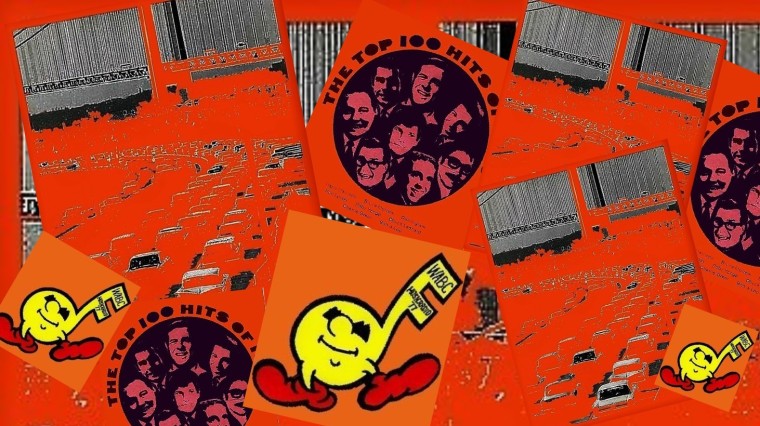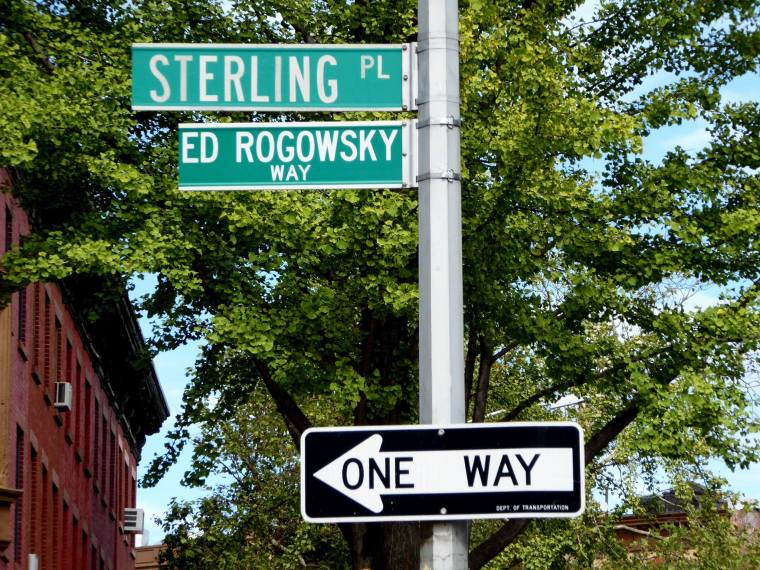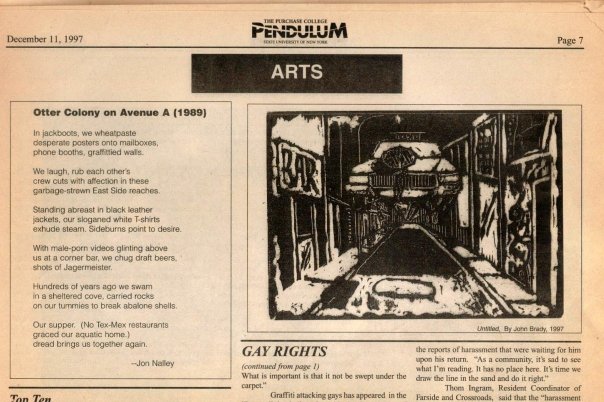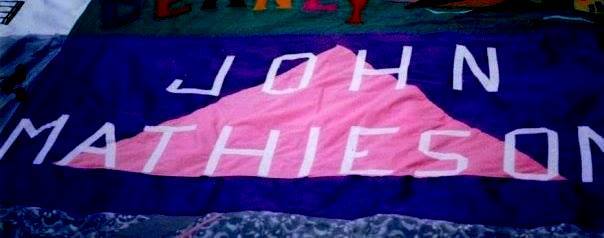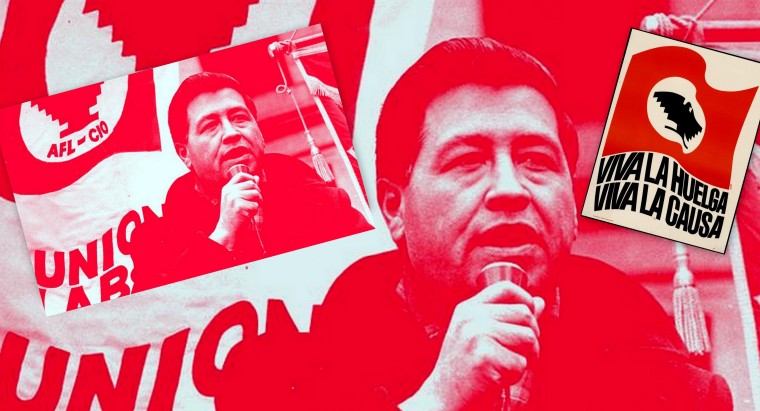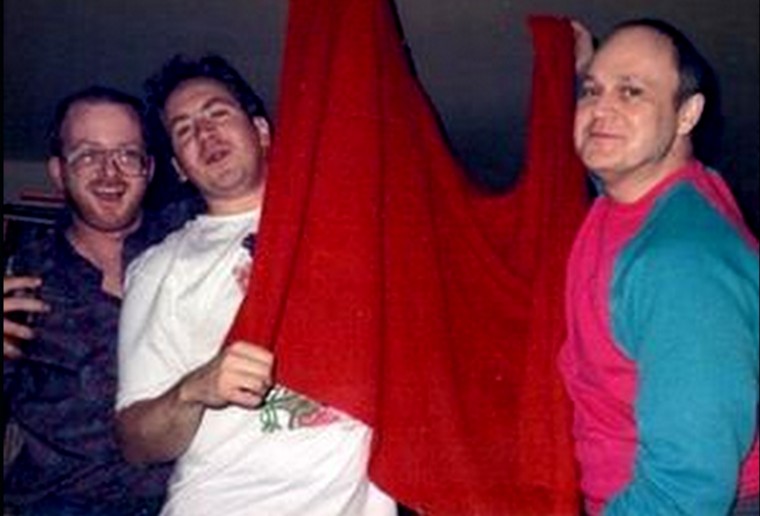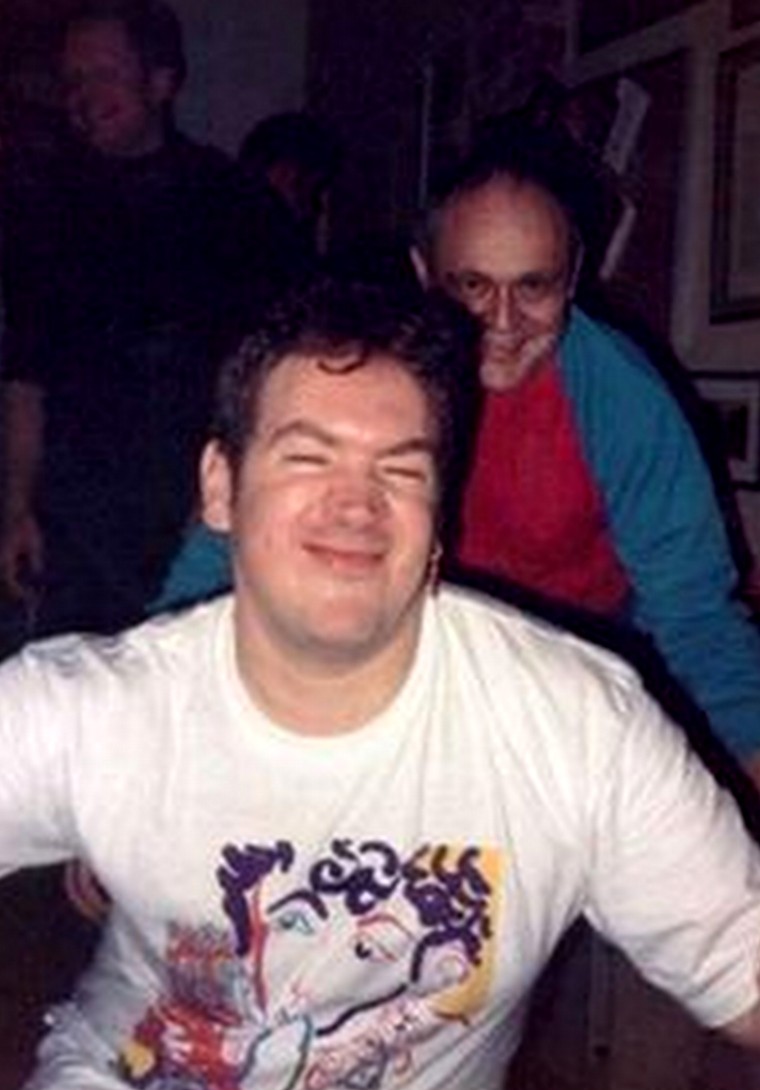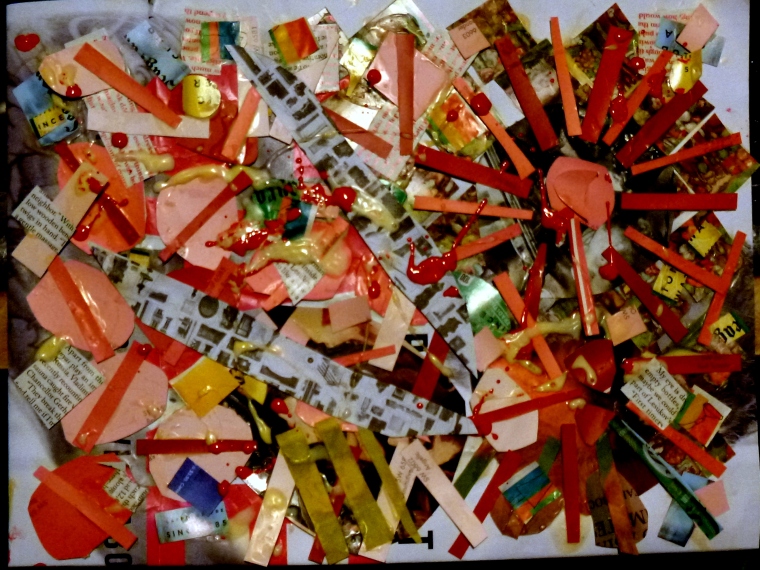
If nothing else, I am most grateful for Hillary’s so-called “misspeaking” <chuckle> because it unveiled the horror of the Reagan administration for those not even born then in ways we could not have possibly imagined. Her “kind words” on behalf of our evil former first lady and our resultant rage have helped to cement – in the minds of many – the putrid political stench ever emanating from the Reagan administration. With all that, only the most benighted, reactionary, and obtuse among us can deny that the Reagans were AIDS war criminals.
A beautiful experience related to this occurred at an “open studios” held during this period at the art department of a local collage. To receive a very beautiful free poster produced by the students, one was required to “create” a piece of art as part of a larger “communal” piece. What did I draw with a handful of crayons? An eraser wiping out history, of course. When I began – without prior solicitation – to volunteer to those students involved what the story represented, they knew instantly. I was deeply heartened by the awareness of the issues surrounding “Nancygate” with these people in their twenties. And their vehemence besides! Indeed, I was struck by the awareness of people in general – particularly young people – to the horrendous situation of people living with AIDS in the Reagan-era “House of Horrors.”
As one who has been involved in Democratic Party politics since my teenage years in the 1970s – and who served officially in the party as an officeholder in the the Party apparatus (club officer, county committee member, etc.) both before and after ACT UP – “Yes!” – we did suffer at the hands of the Reagan Administration. But the perpetrators went well beyond the government and the Republican Party. Other than in certain isolated pockets, Democrats weren’t all that wonderful either. Neither were all straight people horrible and all “gays” and people with AIDS wonderful, supportive, and / or ennobled. I learned the hard way that one can’t judge things by their appearances or labels.
But some things I have been seeing and reading on Facebook and other places in that last few days have troubled me deeply.
First – and most heinous – were those disgusting individuals who said in no uncertain terms to “Get Over It,” re: my reactions and postings regarding “Nancygate.” It pains me to add that such obscenities (which resulted in “instant blockage”) came not from Republicans nor heterosexuals, but rather from fellow gay men whom I’d mistakenly considered “progressive.” And I thought I had major issues with self-hatred and internalized homophobia! No, on this score, I found myself ruthlessly shown up! I was rudely reminded about not being deceived by labels and appearances.
Any gay man who can dare “go there” is – for the time being – forever “dead” to me: I’ve been engaging in a number of instant “black-candled shivas” in the last several days. The stakes are too high on this one. I won’t allow anyone to re-write history in which the Reagans are seen in anyway benevolent. We have seen how “The Big Lie” works historically – and in the present day with our corporate media.
One very difficult post came from a (now former) Facebook friend in the last few days that castigated progressives, socialists, and leftists for their fury about the “Nancy Reagan remarks.” He had the nerve to ask where we leftist and progressives were in 1987 – accusing us of being disingenuous. “What had we done about AIDS?” he taunted. This particular socialist has been politically involved with AIDS since 1983 – when (as a 24 year old) he visited the staff of US Senator Don Reigle on their visitation day at Grand Haven (Michigan) City Hall and demanded money for research and other action. I ended up telling him about testimony I gave at governmental bodies (such as that at the NYC Council in November 1985) and my first arrest for AIDS activism in July 1987. Then I proceeded to tell him that we leftists owed him no apology or response whatsoever – and proceeded to de-friend him.
The horrendous story of what occurred vis-a-vis AIDS during the Reagan years is but the tip of the iceberg of the concurrent outrages going on in that “House of Horrors.” AIDS was far from the only pressing issue. Yes, the scary death toll and the vicious reaction of those around us (yes – even in NYC!) made the issue very personal and compelling. Yes, our friends were dying in NYC’s St. Vincent’s Hospital, Lansing’s Sparrow Hospital, and San Francisco General. Yes, hospital staffs were often abusive to our dying friends. There is no sugar-coating what happened then in the way AIDS affected communities were treated – with the resultant hostility of many “birth families” of the dying, the evil connivance of landlords, the brutality of certain hospital staffs, and the criminal neglect of the government. These aspects of that period – and many more – leave me livid even today. The personal became acutely political.
Sadly, progressives of all kinds had their hands full in those days. Yes, people with AIDS were dying like flies – many times with violence, neglect, and horror – but so too were death squads (supported by our tax dollars) killing people daily in Guatemala and El Salvador. Reagan’s UN Representative, the odious Jean Kirkpatrick lauded mass murderer and US puppet Augusto Pinochet. Reagan’s policy of “constructive engagement” played footsie with the regime killing people in Soweto. “Webster v. Reproductive Health Services” – which occurred during Bush I, but accomplished with Reagan’s SCOTUS appointees – threatened women with deadly back-alley abortions.
Progressives toiled on overdrive at the time: We prevented – through the grassroots auspices of The Committee in Solidarity with the People of El Salvador (CISPES), US Out of Central America (USOCA), the Pledge of Resistance, and the Nicaragua Sister City Project for example – US service members from being killed in a war “on the ground” that Reagan so ached for in Central America. I am still rankled and appalled by the cheek of the “question” posed by my former Facebook friend. To hell with him. What we on the left did to sabotage Reagan administration initiatives and objectives was nothing short of miraculous. And I find the sniping of an ignoramus on this score insufferable.
Closer to home were the following: the virtual avalanche of homeless onto city streets (many of them Vietnam veterans), the Iran-Contra affair (and its elevation of such walking excrement as Oliver North), the indignity of our President laying flowers on the grave of Waffen SS murderers, the evaporation of what still passed for federal housing policy, the destruction of mental health care services and tried-and-true job training programs such as CETA, the implementation of taxation of people’s unemployment benefits while the rich had their taxes cut, implementation of Reagan’s socialism for the rich that had radically distributed wealth upward, etc., ad nauseum. I won’t even go into the efforts of the Nuclear Freeze movement with which I was personally involved. Writing about and reporting on AIDS activism and lesbian and gay liberation issues for the US radical newsweekly The Guardian (not the august British daily) in the 1980s gave me a bird’s-eye view into much of this.
To my former Facebook friend: That’s what we socialists and those on the left were fighting throughout the 1980s, you dimwit. Those of us who were progressive, gay, HIV+, etc., were doing double-, triple-, quadruple-duty and more at the time. Again… No explanation is required: I say this to set the record straight (no pun indended).
Last of all was a Facebook missive by someone of whom I am very fond. His point was that only those who were around in that time and place and personally affected have a right to call politicians and institutions into account for their misdeeds. He was obviously referring to the “Nancygate” controversy in the last few days and the resultant (and apropos) criticisms of Hillary.
With all due respect to this very gifted man, I must vehemently disagree. History is not proprietary, nor our personal domain. It belongs to all of us – or none of us. Again, I have such gratitude to the young persons who weren’t even born at the time of the Reagan era who have been so animated in their outrage about the carnage they weren’t even alive to experience. I am even more grateful that they have included it in their socio-political vernacular. “Bravo to them!” That is what history is SUPPOSED to be about. Why else would we have a “Day Without Art,” Visual AIDS, World AIDS Day, etc.?
While I was only 10 years old (and living several states away) on that December AM hour in Chicago when Fred Hampton was murdered by the forces of “law enforcement,” I have every right to be outraged about what happened and to demand justice. No, I was never in Terezen nor Sachsenhausen, but to me issues surrounding the Holocaust are very personal for me. The Kent State / Jackson State massacres have invigorated and colored my political life for decades in important and moving ways. The sit-down strikes of 1937 in Flint? The Haymarket Rebellion? The killings of Schwerner-Chaney-Goodman? The lynchings of African Americans? The massacre at My Lai? The vicious 1973 US-sponsored coup d’etat in Chile that removed the democratically elected Salvador Allende and killed thousands? No – these historic events and the issues they bring to bear in the present are not the property of those personally affected. Sorry, but I feel those taking up the cause of what you and I experienced in the 1980s should be encouraged and lauded – not remonstrated and condemned. I say “Carry on!” to those you angrily lectured this weekend.
I am so energized that so many of us stood firm to speak personally of our history and grateful that we drew an important line in the sand! Thank you to Garance, Michael, Kevin, Matthew, and many others who shared of your experience! It has meant a lot to me to read about how we lived in our own ways at that time, and the things — similar and different — that we took out of that experience
Sunday night
March 13, 2016
New York City
[“Who Owns History? And Why?” Collage. JN. Saturday evening, March 12, 2016]
